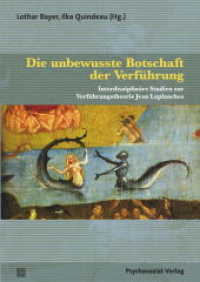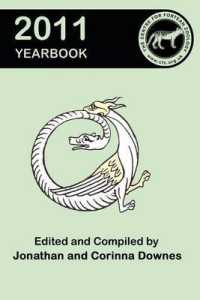Full Description
Terrorism and WMDs: Awareness and Response, Third Edition is fully updated to include the latest technology and tactics surrounding the threats posed by terrorist groups—detailing plausible contexts in which chemical, biological, radiological, nuclear, and explosive (CBRNE) weapons could be used by such actors.
Experienced author Gus Martin has collaborated on updating this resource, with two new chapters at the start of the book outlining the historical origins of terrorism, terrorist typologies, and the evolution of the modern terrorist environment including large-scale regional conflicts and domestic violent extremism in the United States. Additional coverage of new case studies have been added throughout. This includes an examination of the Pulse Nightclub shooting, the January 6, 2021, assault on the U.S. Capitol, the October 7, 2023 Hamas attack on Israel, and additional events that have occurred since the last edition's release. Domestic U.S. threats—from hate, extremist, and supremacist groups—are discussed, as well as emergent and novel tactics being used in the Israel-Gaza conflict and the 2022 Russian invasion and subsequent Russia-Ukraine conflict are examined.
This includes the use of drone attacks by both Ukraine and Russia and Russia's occupation and bombardment of the Zaporizhzhia nuclear power plant (ZNPP), highlighting what could be argued are terror-like tactics that challenge the precepts of accepted international law. In the Middle East, Israel's response in the wake of the October 7, 2023 attack by Islamist terrorists—with its subsequent operations in Gaza and an unprecedented operation involving exploding pagers and communications radios in Lebanon and Syria—evoked international criticism and controversy.
Coverage also focuses on the chemistry and biology of weapons of mass destruction and, the development and history of their use, as well as the human health effects of such weapons. Added references, chapter questions—and the addition of recent terrorist acts to relevant sections—all present the modern threat environment and realistic WMD material access and attack capabilities. Given that terrorist weapons and delivery methods are becoming increasingly sophisticated, the book provides a comprehensive, current survey of terrorism and weapons of mass destruction.
As such, Terrorism and WMDs, Third Edition continues to serve as an invaluable resource to students and professionals studying and working in the fields of terrorism, Homeland Security, and emergency response.
Contents
Introduction
Part I: Introduction to Weapons of Mass Destruction and Terrorism
1. Weapons of Mass Destruction and the Terrorist Threat
2. Terrorism: History and Typologies
3. Terrorism: The Modern Environment
Part II: The Weaponization of CBRNE
4. Chemical Agents
5. Toxic Industrial Chemicals
6. Biological Agents
7. Nuclear and Radiological Hazards
8. Explosives Hazards
Part III: Deploying CBRNE and New WMD Technology
9. Delivery Systems for Weapons of Mass Destruction
10. Directed-Energy Weapons
Part IV: Responding to CBRNE Incidents
11. National Incident Management System and the Incident Command System
12. Personal Protective Equipment for Emergency Response, Decontamination, and Remediation
Appendix A: Glossary
Appendix B: Acronyms
Appendix C: Selected Chemical and Physical Properties of Chemical Agents
Appendix D: Annotated List of Resources for Further Research








